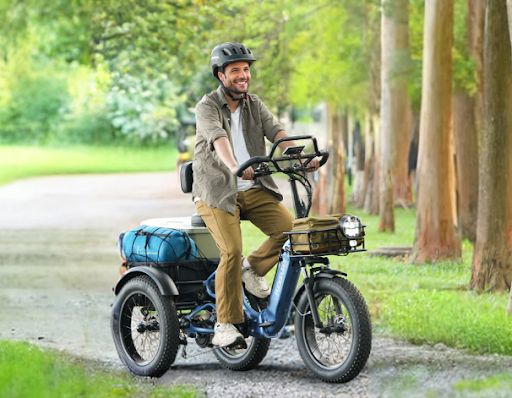Blog
Worth the Splurge: An Epic Heli-hike on Franz Josef Glacier

With our savings from the kiwifruit packhouse, Emmett and I were looking to splurge on a once-in-a-lifetime New Zealand excursion. After some careful consideration, we decided the best way to do that would be heli-hiking up onto Franz Josef Glacier with the aptly named company Franz Josef Glacier Guides. Why a heli-hike? Well, Franz Josef used to be accessible by a short hike up the valley. But because climate change is real and there has been some intensely rapid melting of the glacier in the past decade, it’s nearly impossible to get on the glacier without a helicopter. Also, it’s safer to go with a guided group.
On a Sunday afternoon with perfect weather, we arrived at the base for Franz Josef Glacier Guides in the teeny tiny town of Franz Josef. There we suited up, adding waterproof pants, jackets, and sturdy boots to our outfits. Along with the six other tourists in our crew, we headed over to the helipad.
After a safety briefing on how to approach helicopters, we boarded and strapped ourselves in for a stunning but quick 4 minute ride up onto the glacier. (Click on any photo below to see a larger version).
On the ice, we collectively tied on our crampons and then set off with our guides. As we crunched into the steps they had made earlier that day, the guides explained that the glacier is constantly changing and most mornings they have to carve new paths through the ice. As we approached our first crevasse, they explained that they chip ice into the crevasses to create a filled path (see below).
Over the next few hours, our guides took us all over the ice. We squeezed through countless frosty blue crevasses, crawled through holes in the ice, and even saw a small ice fall on the upper part of the glacier. It was fantastic & gorgeous. My favorite part, though? If we stood still, we could hear the creaking of the glacier as it moved ever so slightly beneath us.


Another group hikes on Franz Josef.
Just as some clouds began to settle on the glacier, our hike came to an end. As we waited for the helicopter, one of our guides who was of Maori descent told us the legend of how Franz Josef came to be. Apparently, hundreds of years ago there was a woman named Hinehukatere. Hinehukatere absolutely loved climbing mountains. She fell in love with a man named Wawe who was more of a staying-at-sea-level kind of guy. As a result, she sadly found herself spending less and less time on the peaks she so loved. One day, she persuaded Wawe to climb up into the mountains with her. Because he loved Hinehukatere, he agreed despite his inexperience at climbing. When Wawe followed Hinehukatere into the mountains, he got caught in an avalanche which unfortunately resulted in his death. Hinehukatere was heartbroken and full of guilt for convincing him to join her. She sat upon a mountain top and cried endless tears. The gods saw her crying and decided to freeze her tears as a memorial to her grief. As you may have guessed, those frozen tears became Franz Josef Glacier. That’s why the Maori name for the glacier is Kā Roimata o Hinehukatere or The Frozen Tears of Hinehukatere.

R.I.P. Wawe
If you’re ever in New Zealand and want to spend a pretty penny (heli-hikes are $450 NZD or $330 USD per person), I would highly recommend Franz Josef Glacier Guides. It was so worth it. Plus, their staff was really knowledgeable and I enjoyed spending time with them up on the ice. As a Floridian who is more accustomed to warm weather and flat landscapes, I was ecstatic to be able to get up close and personal with a glacier. It felt like such a truly foreign place. I genuinely loved every minute of the hike and the chopper rides to and from Franz Josef.
Blog
Why Electric Trikes for Adults Are Becoming a Top Mobility Choice

Electric trikes for adults have quickly risen in popularity over the past few years, becoming one of the most reliable and accessible mobility solutions on the market. These three-wheeled electric vehicles combine comfort, stability, and practicality, making them ideal for seniors, commuters, riders with limited mobility, and anyone who wants a safer alternative to traditional bicycles. As urban transportation evolves and more people prioritize convenient, eco-friendly travel, adult electric trike models continue to stand out as a top choice for everyday mobility.
This guide explores why adult electric trikes have become so popular, the benefits they offer, and what key features to consider when choosing the right model.
Enhanced Stability and Safety
One of the primary reasons adults choose electric trikes is their superior stability. Unlike two-wheeled bicycles, trikes offer a wide, balanced stance that eliminates the risk of tipping over. This makes them especially appealing for:
Seniors who need a safer riding option
People with balance or mobility challenges
Individuals who feel insecure riding a traditional bike
The three-wheel design ensures the trike remains stable even at low speeds or when stopping, reducing the stress and fear some adults experience with regular cycling.
A Comfortable and Easy Riding Experience
Electric trikes prioritize rider comfort. Most models feature upright seating, wide saddles, and ergonomic handlebars that reduce strain on the back, arms, and shoulders. Unlike traditional bicycles, electric trikes do not require riders to lean forward or maintain balance, creating a smooth and relaxing riding experience.
Pedal-assist modes and throttle functions further enhance comfort by helping riders climb hills, start easily from a stop, and reduce fatigue during longer trips.
Eco-Friendly Transportation for Daily Use
As cities push toward sustainable mobility, electric trikes have become an eco-conscious alternative to cars and scooters. They produce zero emissions, consume minimal energy, and significantly reduce dependence on gasoline transportation.
Electric trikes are ideal for:
Short commutes
Local errands
Grocery shopping
Trips around neighborhoods or parks
Their low environmental impact makes them an appealing choice for environmentally aware adults who want convenient transportation without contributing to pollution.
Large Cargo Capacity for Practical Errands
One of the biggest advantages of electric trikes for adults is their exceptional cargo capacity. Many models include rear baskets, front bins, or cargo racks that allow riders to transport groceries, packages, pets, or personal items.
This makes electric trikes perfect for:
Shopping runs
Market visits
Deliveries
Carrying work supplies
Outdoor picnics or recreation
For adults who want a car-free lifestyle, the cargo capacity of an electric trike makes daily tasks easy and practical.
Accessibility for People of All Ages
Electric trikes are built for a wide range of riders, from seniors to commuting adults to people with limited physical strength. Their ease of use, minimal learning curve, and supportive design ensure nearly anyone can ride confidently.
Even riders who have not cycled in years can quickly adapt. Step-through frames, easy controls, and intuitive braking systems make electric trikes one of the most accessible mobility options available.
Improved Independence and Freedom
For older adults or individuals with mobility challenges, an electric trike offers a renewed sense of independence. It enables riders to move freely without relying on public transport or family assistance.
Electric trikes help riders:
Visit friends and family
Travel to appointments
Enjoy parks and outdoor paths
Exercise safely
Maintain an active, independent lifestyle
This emotional and psychological benefit is one of the reasons electric trikes continue to grow in long-term popularity.
Cost-Effective Compared to Cars
Owning and operating a car has become increasingly expensive. Between fuel, insurance, parking, and maintenance, many adults find the cost too high for short trips.
Electric trikes offer an affordable alternative:
Low charging costs
Minimal maintenance
No insurance required (in most regions)
No fuel expenses
Long-lasting batteries
For adults seeking affordable mobility without sacrificing convenience, electric trikes provide outstanding value.
Health and Fitness Benefits
Electric trikes encourage physical activity without overexertion. Riders can choose how much effort to put into pedaling, thanks to adjustable pedal-assist modes.
Benefits include:
Low-impact exercise
Improved cardiovascular health
Muscle strengthening
Better joint flexibility
Increased time outdoors
This makes electric trikes ideal for seniors and adults who want gentle, enjoyable exercise.
Versatile for Multiple Riding Environments
Electric trikes are designed for various environments, including:
City streets
Bike paths
Suburban neighborhoods
Parks
Smooth trails
Their stability and comfortable speed range make them safe for both short rides and extended afternoon trips.
Key Features to Look for When Choosing an Electric Trike
When selecting an electric trike for adults, consider the following features:
Motor Power
Most adult e-trikes come with 960W motors. Choose higher power if you plan to climb hills or carry heavy loads.
Battery Capacity
Longer-lasting batteries (648Wh–960Wh) allow riders to travel farther on a single charge.
Cargo Options
Rear baskets, insulated boxes, or front-mounted storage are essential for practical use.
Seat Comfort
A wide, cushioned saddle ensures comfort on long rides.
Frame Design
Step-through frames make mounting and dismounting much easier.
Braking System
Disc brakes offer strong, reliable stopping power for heavier trikes.
Tire Size
Wider tires provide stability and shock absorption.
Conclusion
Electric trikes for adults have become a top mobility choice thanks to their stability, practicality, comfort, and accessibility. They offer a safe riding experience for seniors, provide an eco-friendly transportation solution for commuters, and support greater independence for adults who value both convenience and mobility.
As cities continue to shift toward sustainable and user-friendly transportation, electric trikes will only grow more popular. Whether for errands, leisure rides, exercise, or daily commutes, adult electric trikes offer an unmatched combination of function and freedom.If you’re interested in this type of electric trikes , you can visit websites that offer high-quality models, such as Puckipuppy.
Blog
How Flood Damage Severity Determines Vehicle Repairability and Value

Flood-damaged vehicles range from barely wet to completely submerged, yet auction listings often provide minimal detail about water exposure levels. Understanding how water height affects different systems helps buyers identify repairable vehicles versus total losses destined for parts-only use.
Water line evidence in photos and damage descriptions reveal whether a vehicle experienced minor floor saturation or engine compartment submersion. This distinction separates $2,000 repairs from $15,000 nightmares that never run reliably again.
Understanding Water Line Heights and System Impact
Floor-level flooding affects carpets, seat bases, and lower door panels without reaching critical mechanical or electrical components. These vehicles often need thorough drying, carpet replacement, and underbody rust prevention. The drivetrain, engine, and most electronics remain untouched by water.
Dashboard-level water reaches instrument clusters, HVAC controls, airbag modules, and wiring harnesses running through door sills. Electrical problems multiply exponentially at this height. Modules might work initially then fail weeks later as corrosion progresses through circuit boards.
Engine compartment flooding introduces water into air intakes, causing hydrolock if the engine was running during submersion. Water incompressible nature bends connecting rods, cracks cylinder walls, or damages pistons when engines attempt compression strokes. These failures require complete engine replacement.
Complete submersion saturates everything. Headliners drip for weeks, roof electronics fail, and corrosion attacks every metal surface. These vehicles rarely justify repair costs unless extremely valuable or rare. Most become parts donors rather than restoration candidates.
Identifying Water Lines in Auction Photos
Mud lines on exterior panels show maximum water height. Look for dirt deposits, water staining, or debris stuck in body seams and crevices. These marks persist even after washing attempts. Compare marks on multiple panels to verify consistency.
Interior water staining appears on door panels, seat fabric, and dashboard surfaces. Discoloration, tide marks, or visible sediment indicate how high water reached inside the cabin. Light-colored interiors show these marks more clearly than dark materials.
Carpet and floor mat condition reveals saturation depth. Warped floor mats, stiff carpeting, or visible mold growth confirm water intrusion. Fresh carpets in older vehicles might indicate rushed cleanup before auction listing.
Engine bay components show corrosion patterns matching water exposure. Clean lower sections with rusty upper components suggest partial submersion. Uniform corrosion across all surfaces indicates complete engine flooding.
Critical Systems Most Affected by Water Damage
Electronic control modules throughout modern vehicles fail when exposed to moisture. Engine computers, transmission controllers, ABS modules, and body control units all contain sensitive circuitry vulnerable to water damage. Replacement costs reach $300-$1,200 per module.
Wiring harnesses corrode from inside out after water intrusion. Copper wires oxidize inside insulation where damage isn’t visible externally. Connections fail intermittently, creating diagnostic nightmares. Entire harnesses cost $800-$3,000 for replacement plus labor.
Airbag systems require complete replacement after water exposure. Moisture compromises explosive propellant reliability and corrodes electrical connections. Insurance and safety regulations prohibit reusing waterlogged airbag components regardless of apparent condition.
Bearings throughout the drivetrain suffer when water breaches seals. Wheel bearings, transmission bearings, and differential components all need immediate service after submersion. Water contamination causes rapid wear leading to failure within hundreds of miles.
How Saltwater vs. Freshwater Changes Damage Severity
Saltwater accelerates corrosion dramatically compared to freshwater. Coastal flooding or storm surge creates more severe long-term damage than river or rain flooding. Salt deposits remain after drying and continue attracting moisture from air humidity.
Electrical components corrode faster in saltwater. Circuit boards develop shorts within days as salt residue conducts electricity between traces. Modules that might survive freshwater exposure fail rapidly after saltwater contact.
Mechanical components experience similar acceleration. Brake lines, fuel lines, and chassis components rust through years faster after saltwater exposure. The aggressive corrosion never stops without complete disassembly and neutralization.
Freshwater creates slower damage progression but still requires thorough remediation. Minerals in river water leave deposits that cause problems, though less aggressively than salt. Proper cleaning and drying can save freshwater flood vehicles while similar saltwater examples are unsalvageable.
Assessing Whether Engines Survived Flooding
Hydrolocked engines show obvious damage indicators. Bent connecting rods create knocking sounds, pistons might be cracked, and cylinder walls can be scored. Compression tests reveal these problems definitively. Repair requires complete engine disassembly and often replacement.
Engines not running during flood submersion often survive intact. Water enters through intakes but causes no immediate mechanical damage. Thorough draining, cleaning, and fluid replacement might restore full function. This scenario offers best-case outcomes for flooded vehicles.
Rust inside cylinders develops within days of water intrusion if not addressed immediately. Orange deposits on cylinder walls visible through spark plug holes indicate oxidation started. These engines need cylinder honing at minimum, possibly boring if rust penetrated deeply.
Oil contamination reveals water intrusion even after draining. Milky appearance, excessive volume, or water droplets in drained oil confirm engine internals contacted water. Multiple oil changes with short intervals help flush residual moisture but don’t guarantee long-term reliability.
Electrical System Recovery Possibilities and Limitations
Disconnecting batteries immediately after flooding prevents many electrical problems. Water alone causes minimal damage — the real killer is electrolysis when current flows through contaminated connections. Vehicles with batteries disconnected during submersion fare better than those that remained powered.
Cleaning circuit boards with electronics-grade solvents sometimes saves modules. Corrosion removal, component replacement, and conformal coating application can restore functionality. This specialized work costs $200-$500 per module but beats $800-$1,200 replacement prices.
Body control modules, instrument clusters, and infotainment systems are more salvageable than safety-critical modules. Airbag controllers and ABS modules require replacement regardless of apparent function due to liability concerns. No shop will certify waterlogged safety systems.
Wiring harness replacement represents the most expensive electrical repair. Labor for removal and installation often exceeds parts cost. Some sections can be repaired with new connectors and heat-shrink tubing, saving partial replacement expenses.
Long-Term Reliability Concerns for Flood Vehicles
Corrosion continues years after flooding. Hidden areas inside door cavities, rocker panels, and structural members trap moisture and corrode from inside out. Surface treatments don’t reach these areas, allowing rust to progress unseen until panels rust through.
Electrical gremlins appear randomly as corroded connections fail. Problems might not surface for months, then multiple systems fail within weeks as corrosion reaches critical levels throughout the harness. These intermittent issues frustrate diagnosis and repair.
Mechanical components with compromised bearings fail prematurely. Wheel bearings, CV joints, and transmission components might seem fine initially but wear rapidly once water-damaged seals allow contamination. These failures cluster 6-18 months after flooding.
Mold growth inside ventilation systems and sound insulation persists despite cleaning attempts. Health concerns arise from constant mold spore exposure. Musty odors never completely disappear, affecting resale value and occupant comfort.
When Flood Vehicles Make Financial Sense
Parts donors justify flood vehicle purchases regardless of repair feasibility. Body panels, glass, interior trim, and undamaged mechanical components provide value exceeding purchase prices. Buyers need space for disassembly and parts storage.
Minimal flooding limited to carpet areas can be addressed economically. Thorough drying, carpet replacement, and rust prevention treatments cost $800-$1,500. If the vehicle otherwise meets needs and sells cheaply enough, this repair level makes sense.
Buyers with extensive automotive electrical experience can tackle flood repairs other buyers avoid. The labor represents the largest cost component. Doing the work personally saves thousands, changing the economic calculation significantly.
Extremely rare or valuable vehicles sometimes justify comprehensive flood remediation. Classic cars or specialty models worth $30,000-$50,000 might be worth $10,000-$15,000 in complete restoration when clean examples are unavailable or far more expensive.
Documentation and Disclosure Requirements
Most states require flood damage disclosure when reselling vehicles. Title brands like “flood” or “water damage” must transfer to subsequent owners. Failure to disclose creates legal liability and potential fraud charges.
Some buyers attempt title washing by registering flood vehicles in states with lenient branding laws. This practice is illegal under federal law but still occurs. Buyers should always run vehicle history checks regardless of current title appearance.
Insurance claims history reveals flooding even when titles appear clean. Comprehensive vehicle history reports show insurance payouts for flood damage, alerting buyers to undisclosed problems. This background check is essential before purchasing any used vehicle.
Auction platforms at totaled cars for sale channels typically disclose flood damage in vehicle descriptions. However, severity details vary. “Water damage” might mean anything from wet carpets to complete submersion. Request additional information before bidding.
Final Thoughts
Flood damage assessment requires understanding water exposure height and affected systems. Minor flooding creates manageable repairs while severe submersion rarely justifies restoration costs. The difference determines whether a vehicle becomes reliable transportation or an endless money pit.
Buyers at auction cars for sale platforms need complete information about water lines, engine condition, and electrical system status before bidding. Missing these details leads to purchasing vehicles that will never run properly despite significant investment. Taking time to research flood damage severity and repair implications separates smart purchases from expensive mistakes at vehicle auctions.
Blog
Why Real Estate Goals Matter For Growth, Branding, And Long-Term Success

The foundation of any successful career depends on setting the right, feasible, and realistic professional goals. To establish a steady path in the competitive real estate market demands focus, discipline, and commitment. The real estate market reflects both opportunity and challenge, which demands clarity, adaptability, and strategic targets for continuous advancement. However, a clear idea about how structured objectives guide progress becomes essential for long-term growth.
Real Estate goals serve as the guiding map that connects ambition with measurable action and achievable success. These goals shape branding, strengthen growth, and create long-term success that reflects authenticity and professional excellence. Every aspiring agent or investor seeks direction that builds confidence, recognition, and sustainable financial independence in this field. This article explains how meaningful targets drive growth, refine branding, and secure long-term success.
1. They Give Business a Clear Direction
A clear direction allows professionals in real estate to navigate complex markets with focus and determination. Goals work as a compass that points every step toward measurable results and steady progress. Without a proper direction, even hardworking professionals may lose focus on the right path that defines real success in real estate. Structured objectives keep actions purposeful, organized, and closely connected to the broader vision of achievement.
Direction creates confidence and provides clarity when market shifts or unpredictable situations appear within the industry. A clear target transforms daily routines into intentional efforts that move projects toward profitable outcomes. Every defined target turns vague ambition into actionable progress that shapes sustainable growth. Property experts with structured targets rarely drift aimlessly because each choice aligns with their larger mission.
2. They Help Track Real Progress
If you can track your progress properly, it will allow you to recognize accomplishments and find areas that need improvement. Real estate professionals benefit from measurable goals because numbers reveal truth and highlight performance with undeniable clarity. A consistent review of metrics, such as leads, conversions, or property turnovers, ensures efforts lead to productive outcomes. Regular evaluations transform data into insight that helps experts make smarter adjustments for better future success.
Predefined targets create accountability that strengthens discipline and commitment in every stage of professional development. Progress tracking eliminates confusion as it shows evidence of growth, even during slower seasons or uncertain market conditions. If improvement becomes clear in black-and-white statistics, it reinforces motivation to build stronger, more consistent real estate practices. Experts who monitor milestones maintain direction, confidence, and a genuine sense of purpose across every project they undertake.
3. They Strengthen Financial Stability
Well-defined real estate targets centered on finance establish a safety net that protects income during unpredictable economic shifts. When professionals set profit targets or savings objectives, they manage cash flow and maintain control over investment outcomes. When income streams fluctuate, structured goals ensure consistent profitability through strategic decisions. Over time, disciplined, well-defined targets transform temporary profits into long-term wealth that supports personal and professional stability.
Financial stability enables confident risk-taking because it allows a clear understanding of budgets and potential returns before any opportunity. Measured targets inspire responsible planning that reduces the emotional course of action caused by pressure. With strong targets, you can approach negotiations, acquisitions, and investments with precision every single time. This balance between ambition and control becomes the foundation for long-term growth within any real estate career path.
4. They Sharpen Skills And Build A Professional Edge
Skill-based goals push professionals to evolve within an industry that constantly transforms through innovation. The pursuit of certifications, new negotiation techniques, or technology mastery sharpens abilities that elevate credibility and trust. A commitment to such skill development separates average performers from exceptional professionals. Building expertise through goal-based learning ensures relevance and adaptability across volatile market conditions.
Each educational edge introduces strategies that enhance productivity, communication, and overall business efficiency. Well-defined learning objectives help professionals remain updated about modern marketing tactics, property management, and investment analysis. The consistent pursuit of improvement creates a habit of excellence that supports long-term growth. When skills evolve with intention, real estate professionals strengthen their reputation, attract premium clients, and secure professional influence.
5. They Expand Networks And Open New Opportunities
Relationship-based targets expand professional reach and introduce opportunities that can lead to higher earnings. If you set targets for networking events, collaborations, or mentorships, you will ensure consistent engagement with influential industry figures. Each new relationship provides valuable insights, referrals, and partnerships that drive business forward through mutual support. So, network with purpose to ensure visibility and relevance in a field that thrives on strong human connections.
Professional relationships built through goal-oriented interactions foster trust and open doors to innovative market opportunities. A robust network serves as an essential support system during complicated transactions. Goal-based connections create authenticity through genuine focus on meaningful exchanges rather than superficial business connections. With time, these networks transform into long-term partnerships that reinforce growth and reliability.
6. They Strengthen Brand Identity And Market Presence
A strong personal brand distinguishes professionals in a crowded marketplace and communicates reliability and expertise instantly. Feasible targets in this industry create consistency across platforms, which makes every message familiar and trustworthy. Each visual element, post, and presentation forms part of a broader image that represents credibility. Proper goals ensure that reputation grows intentionally instead of relying on random exposure or chance encounters.
Consistent promotion encourages recognition and builds emotional connections that inspire client loyalty. A well-planned image attracts ideal clients who share values and trust proven competence within the market. If one can set clear objectives, professionals design a narrative that defines purpose, voice, and long-term promise. This narrative becomes the bridge between reputation and revenue, which solidifies presence as a respected leader in real estate.
7. They Keep Focus On Long-Term Vision
Long-term targets connect daily actions with the larger mission that drives professional fulfillment. When milestones are set, they prevent distractions and align every short-term victory with stable real estate success. Without a structured vision, progress can scatter, which leaves achievements fragmented and disconnected from sustainable growth plans. Goal alignment ensures consistent motivation because every task feels purposeful and contributes toward meaningful career advancement.
The habit of refining long-term targets keeps strategies changeable and responsive to market shifts. Regular assessment prevents stagnation and helps agents adapt to new trends without losing overall direction.. A strong vision supported by specific targets nurtures resilience during setbacks and fuels persistence through challenges. Ultimately, a focus on future aspirations transforms ambition into legacy, which secures both stability and continued professional evolution.
Real estate goals represent more than simple targets; they form the foundation for growth, branding, and sustained prosperity. They bring clarity, discipline, and vision into an industry driven by competition, opportunity, and human connection. Each well-defined objective transforms uncertainty into confidence, which empowers professionals to pursue consistent results. With direction, progress tracking, and strong branding, real estate careers evolve from transactions into long-term success stories that inspire others.






